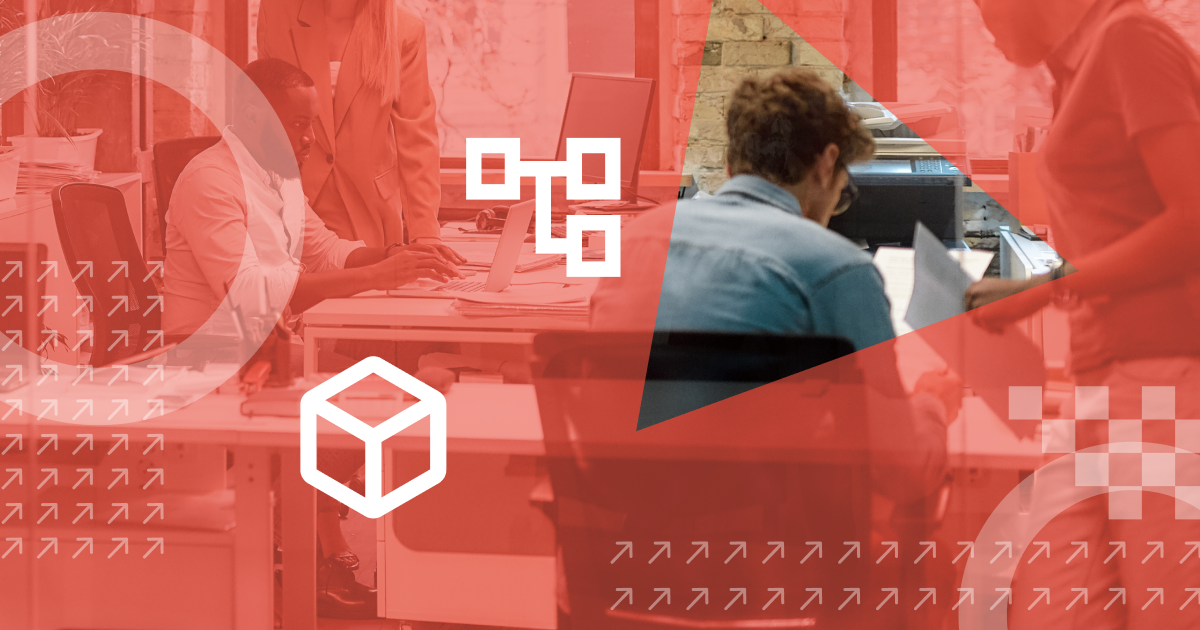Enterprise headless CMS: Future-proofing your digital strategy

An enterprise headless CMS enhances your digital strategy by helping you manage large-scale content. It streamlines your operations, allowing you to future-proof your digital strategy with personalized, omnichannel content delivery. Opt for the industry-leading headless CMS today. Talk to us today.
Highlights
You’ll learn how an enterprise headless CMS supports and future-proofs your digital strategy
- Agility and scalability: Adapt quickly to market changes with a flexible and agile CMS
- Omnichannel content delivery: manage content across multiple platforms
- Efficiency: streamline operations, reduce time and costs, and increase publishing speed
- Future-proofing: Ensure long-term relevance with a robust, adaptable solution
Give your digital strategy the boost it needs today with an enterprise headless CMS. Talk to us today!
Keep reading to learn more!
An enterprise headless CMS decouples content presentation and database layers. Under the interactive website is a database connected via APIs.
Headless CMSes are preferable to traditional CMSes because they store the content away from the code used to build the presentation layer. This way, one system can manage your entire content, regardless of where you want your web application to be served.
In a recent survey, 61% of companies reported an increased ROI after migrating to headless CMS. An enterprise headless CMS allows brands to personalize and localize content, improving user experience.
What is an enterprise headless CMS?
An enterprise headless CMS is a CMS built to manage content at scale. Tailored to the needs of large organizations, it allows you to adapt webpages to any digital channels without impacting the original content. It is scalable, has enterprise-grade security, and supports advanced customization, multi-tenancy, and third-party integrations.
An enterprise headless CMS supports operational efficiency, enhanced agility, and customer experience (CX). It is built to manage and deliver vast amounts of content across multiple digital platforms. APIs that bond the back end and the front end make this possible.
Due to its numerous benefits, 48% of organizations using traditional CMS are planning to switch to it within the next two years.
Overcome traditional CMS issues with Contentstack: Are you tired of slow development times and rising costs due to legacy monolithic suites? Contentstack offers a modern, component-based solution designed for the needs of today's enterprises. Discover agility and improved ROI. Request a demo to learn more.
Enterprise headless CMS vs. traditional CMS vs. hybrid CMS
Enterprise headless CMS is almost like the standard headless CMS, but it offers some extra features designed for big companies and organizations. This is how it compares to traditional and hybrid CMS:
Factors | Traditional CMS | Enterprise headless CMS | Hybrid CMS |
The Focus | Ease of use—like the WYSIWYG editor | More scalable, secure, and flexible with API | A mix of headless & traditional |
Content Delivery | Limited, focused on websites | Multichannels and Omnichannel. Serves websites, mobile apps, etc. | More flexible than traditional CMS with the use of APIs. |
Flexibility | Less flexible, with a pre-built front-end | More flexible due to its decoupled, API-centric architecture | More flexible than traditional CMS with a customizable front-end |
Scalability | Less scalable, struggles with large content volumes | Highly scalable due to cloud storage facilities | It varies but may struggle at large scale |
Security | Lacks advanced security features | Robust security features, granular controls, and compliance certifications | Security varies, depending on the platform |
Benefits of using an enterprise headless CMS
89% of businesses that use headless CMS report huge improvements in their omnichannel content delivery. Businesses can transform their digital strategy by opting for an enterprise headless CMS. Here are other benefits to consider:
Flexibility and scalability
With enterprise headless CMS, organizations can adapt quickly to market trends and technologies. Enterprise CMSes are API-first, cloud-native, and microservices-based. Hence, there are abundant storage and auto-scaling resources that allow them to handle traffic spikes and updates. These factors also support system resilience and digital innovation.
Enhanced SEO capabilities
Enterprise headless CMS offers the tools to optimize content for search engines. That allows organizations to increase organic traffic, improve SERP performance, and reach a wider audience.
Improved omnichannel content delivery
An enterprise headless CMS enables brands to interact with and surface content across all in-store, online, or mobile channels. It allows them to deliver seamless digital experiences via unified brand messaging, visuals and offers.
Future-proofing your digital strategy
Future-proofing your digital strategy involves using API-first architecture and ensuring the system is scalable. With an API-first approach, businesses can tap into emerging technologies, such as AI, the Internet of Things (IoT), blockchain, and more.
An enterprise headless CMS offers those benefits, including microservices and cloud-native features. Relying on these architectures ensures you can manage modular components within the CMS and improve security without re-engineering the system.
How an enterprise headless CMS boosts your digital strategy
Enterprise headless CMS is a growth trigger because it allows you to add new features that extend its functionality. The API-first approach allows seamless integration with existing technologies like ERP and CRM systems. APIs connect the back-end system with these enterprise technologies, enabling businesses to deliver comprehensive content experiences.
As businesses grow and expand, they are also challenged by serving content in multiple languages and cultural contexts. An enterprise headless CMS addresses this. It comes with localization and translation features that allow you to serve content in various languages without losing its relevance and nuances.
Finally, enterprise headless CMS platforms are built for dynamic and large-scale content delivery. Their modular features allow brands to customize content, plug in the latest tech stacks, and update separate modules as required, improving publishing speed and system resilience.
Implementing an enterprise headless CMS
Implementing an enterprise headless CMS requires a thorough assessment of current IT capabilities and the creation of a strategic implementation plan. Here are the practical steps to follow.
- Outline your business case: Consider your long-term goals and outline how an enterprise headless CMS supports them. You may want better scalability, faster content delivery, content localization or multi-platform support.
- Audit your content: Review the available content to understand its scope and structure. This will ensure that you properly plan your content migration and future content strategies.
- Assess technical features: Evaluate the technical capabilities needed to support a headless CMS, like API connections, apps and integrations, version control, and front-end development resources.
- Develop a roadmap: Create a detailed plan with assigned roles and responsibilities, implementation plan and phases, milestones, and backup plans. Also, document the headless CMS implementation process.
- Implement and test: Once you outline the roadmap, select a suitable headless CMS solution, set up APIs and security, integrate relevant systems, and then test to ensure the system works as it should. You are ready to go live once you are satisfied with your testing.
Best practices for a smooth transition
Considering the amount of work required to implement an enterprise headless CMS, it is essential to follow best practices to ensure a smooth transition. Here are some tips.
- Choose the right API: Headless CMSes are API-driven. So, develop proper APIs to interpret the back-end logic and relay it to the presentation layer. REST and GraphQL are the most common, while gRPC offers higher speed and efficiency.
- Train your team: Switching to an enterprise headless CMS will impact your workflows. Hence, provide proper training for your team to familiarize them with the system and how it works.
- Phase the rollout: Phase the rollout of the headless CMS to reduce disruptions. Manage content migration and user training in phases. That gives your team ample time to adapt and ensures you enjoy a less bumpy transition.
- Choose the right front-end framework: Choose the right front-end framework that suits your business goals. For instance, Vue offers speed-to-market, Angular is suitable for building complex enterprise applications, and Reach works well for delivering omnichannel experiences with reusable components. Also, consider code maintenance, support, and flexibility.
Contentstack: A Leader in CMS Performance. Experience the strength of Contentstack, a standout performer in Forrester's Q3 2023 CMS report. Contentstack simplifies your digital experience with our back-end extensibility and global deployments. Request a demo to learn more.
Choosing the right enterprise headless CMS platform
Choosing the right enterprise headless CMS requires a deep understanding of your organization's digital needs. Consider content requirements, integration needs, performance, security, compliance, and the role of APIs. Also, assess workflow management and user interfaces.
Future trends in headless CMS
Trends come and go, but they continually impact businesses and how they connect with their audience.
- Hyper personalization: This is where the headless architecture, AI, and personalization engines come into play. Brands can create content blocks for each customer sub-segment that personalization engines can hyper-personalize to suit each site visitor.
- Unified customer journey: Headless commerce adoption will lead to more streamlined customer journeys. Brands can customize every aspect of the e-commerce experience and provide real-time storefront experiences.
Case studies
RSA Insurance
Creating and launching content was taking too many resources as it was outsourced. RSA Insurance wanted the benefit of reusable content types to streamline content delivery and reduce potential human error. They also wanted to be able to control the content management process.
Switching to Contentstack's headless CMS allowed them to do all that. The change led to a faster time to publish, improved website performance, and better engagement thanks to more consistent brand messaging.
Kerri Thomas, the Content Workflow Manager, said. "The ability to make quick changes to quote and buy is huge. It's all now within our control to make changes, which was what we were looking for - to release on our own timeline. All in all, it’s a much more efficient way of working."
Read more about the transformation at RSA Insurance.
1-800-Flowers
1-800-Flowers relied on an inefficient CMS that needed a different approach for each channel. B2C desktop experiences needed full HTML, while mobile web needed proxied traffic to override the HTML.
1-800-FLOWERS chose Contentstack's headless CMS to act as a single centralized hub to power its digital platforms. That resulted in better platform stability and unified management of 15 brands.
Hear from Matt McHale, Senior Vice President, Application Development. "Contentstack helps provide the foundation we need to scale efficiently, enabling us to manage multiple brands effectively and continue delivering high-quality experiences to our customers as we grow. It was a big shift for everyone, but we haven’t looked back."
Read more about 1-800-Flowers e-commerce success with Contentstack headless CMS.
FAQ section
What is an enterprise-level CMS?
An enterprise-level CMS is a content management system specially designed to cater to large organizations that need several features.
What is a headless CMS?
A headless CMS is a technology that separates the website interface presentation from the database layer and allows for an optimized API connection between both of them.
What is the most powerful headless CMS?
While several headless CMS solutions offer advanced features, Contentstack’s headless CMS stands out for its automation, ease of use, and enterprise-level security.
What are the three benefits of using a headless CMS?
A headless CMS allows businesses to adapt content for any digital platform. It is also scalable and supports business agility.
How does a headless CMS differ from a traditional CMS?
A headless CMS separates content storage from its presentation and treats the back end and front end as separate entities. On the other hand, a traditional CMS bundles them into one package, leaving little room for flexibility.
Learn more
An enterprise headless CMS is built for speed and scale. It is flexible and scalable and offers first-class efficiency for personalized and omnichannel content delivery across multiple digital channels and platforms.
Jumpstart and future-proof your digital strategy with an enterprise headless system today. Start by identifying the gaps in your business that a headless CMS can fill. Then, create an implementation plan and choose Contentstack MACH-enabled enterprise headless CMS to transform your digital strategy. Talk to us today.
About Contentstack
The Contentstack team comprises highly skilled professionals specializing in product marketing, customer acquisition and retention, and digital marketing strategy. With extensive experience holding senior positions at renowned technology companies across Fortune 500, mid-size, and start-up sectors, our team offers impactful solutions based on diverse backgrounds and extensive industry knowledge.
Contentstack is on a mission to deliver the world’s best digital experiences through a fusion of cutting-edge content management, customer data, personalization, and AI technology. Iconic brands, such as AirFrance KLM, ASICS, Burberry, Mattel, Mitsubishi, and Walmart, depend on the platform to rise above the noise in today's crowded digital markets and gain their competitive edge.
In January 2025, Contentstack proudly secured its first-ever position as a Visionary in the 2025 Gartner® Magic Quadrant™ for Digital Experience Platforms (DXP). Further solidifying its prominent standing, Contentstack was recognized as a Leader in the Forrester Research, Inc. March 2025 report, “The Forrester Wave™: Content Management Systems (CMS), Q1 2025.” Contentstack was the only pure headless provider named as a Leader in the report, which evaluated 13 top CMS providers on 19 criteria for current offering and strategy.
Follow Contentstack on LinkedIn.







.svg?format=pjpg&auto=webp)
.svg?format=pjpg&auto=webp)
.png?format=pjpg&auto=webp)






.png?format=pjpg&auto=webp)



